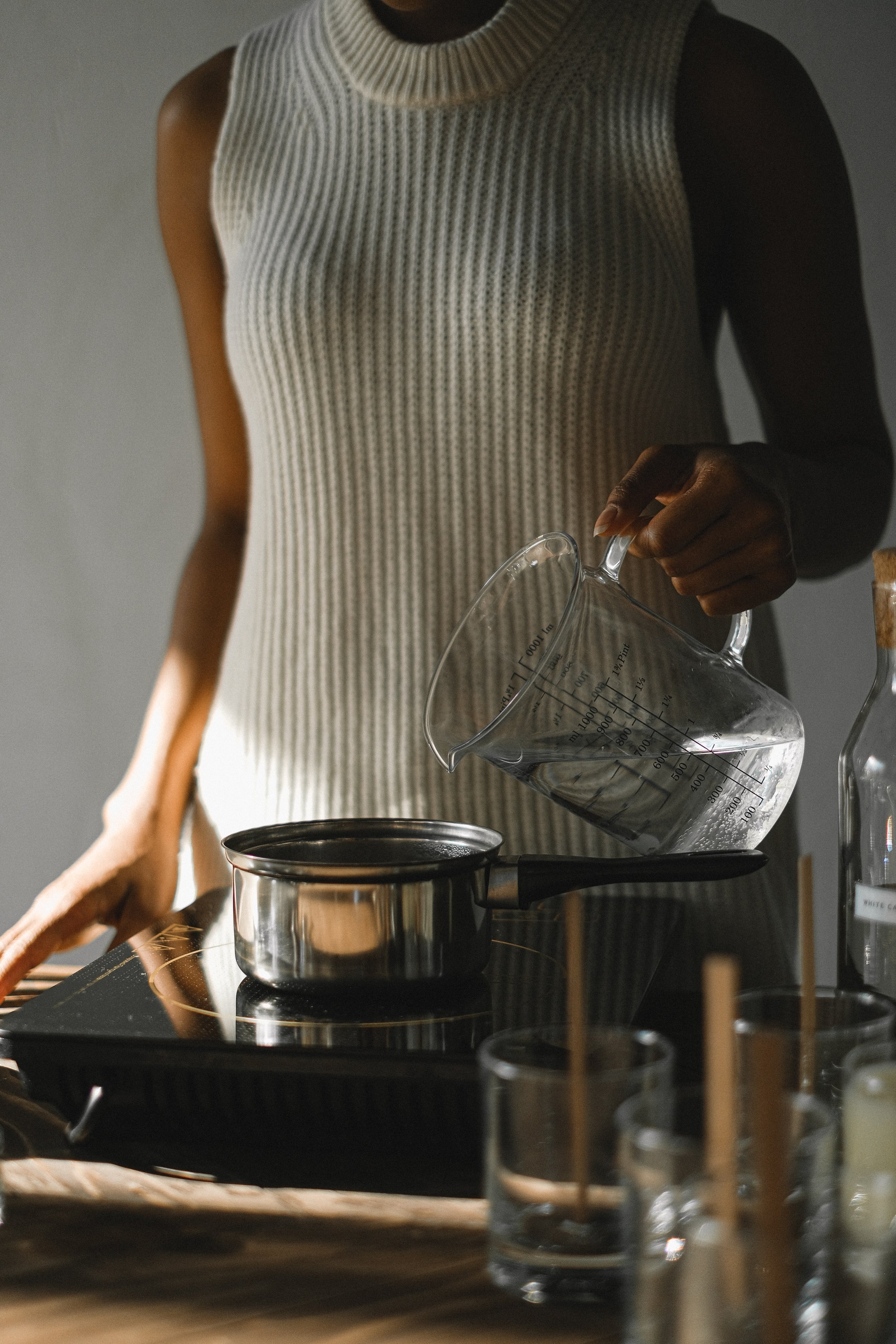The Ultimate Guide to Menstrual Cups
In times when sustainability and personal health are becoming increasingly important, the menstrual cup has emerged as a game-changing solution for menstruating individuals. In this blog post, we will explain everything you need to know about the menstrual cup and explore its benefits.
What is a menstrual cup?
The menstrual cup is a reusable feminine hygiene product. It is a small, flexible, funnel-shaped cup made of materials such as silicone, latex or TPE (thermoplastic elastomer) that collects menstrual blood instead of absorbing it.
It is reusable and can be used for several years if properly cleaned and maintained. Unlike disposable products like tampons and pads that are thrown away after each use, using a menstrual cup contributes to a lower environmental impact.
Cups can hold more blood than other methods, which is why many women use them as an eco-friendly alternative to tampons. Depending on your menstrual bleeding, you can wear a cup for up to 12 hours.
Why use a menstrual cup?
Environmental friendliness: The reusable menstrual cup is eco-friendly, reduces waste, and protects the environment compared to disposable products.
Cost-efficiency: Unlike tampons or pads, which must be constantly re-purchased, you only pay a one-time price for a reusable menstrual cup. Although the initial purchase price is a little higher, you will save a lot of money in the long run because the menstrual cup can be used for several years.
Convenience and freedom: The menstrual cup holds more blood than tampons and pads, provides comfort, and allows unrestricted freedom of movement. The biggest advantage of a sustainable menstrual cup is that don’t need to regularly buy tampons or pads. This is not only a relief for your personal budgeting, but also a significant contribution to environmental protection. With a menstrual cup, you can experience seven to ten years of periods without worrying about supplies. It also offers the practical advantage that you can wear it for eight to twelve hours with average heavy bleeding - which means that it can easily accompany you through a whole working day.
Health benefits: The menstrual cup is chemical-free and reduces the risk of infections and Toxic Shock Syndrome. Besides, the material has been made resistant to bacterial growth. That is why menstrual cups are safer than other period products.
How do I use my menstrual cup?
The first time you use your menstrual cup, it may feel uncomfortable at first. To ensure that the process goes smoothly, it is recommended to moisten the rim of the cup with water or ph-friendly, water-based lubricant before the insertion. A moist menstrual cup is easier to insert.
Now follow these steps:
Wash your hands thoroughly.
Fold the menstrual cup tightly and hold it in one hand with the rim facing up.
Insert the cup into the vagina with the rim facing up, as you would with a tampon without an applicator. The cup should sit a few inches below your cervix.
Once the cup is inserted, twist it. It will pop open and form an airtight seal that prevents leakage.
If you have inserted the menstrual cup correctly, you should not feel it. You should be able to move around, jump, sit, stand, and perform other daily activities without the cup interfering.
Menstrual cup folding techniques
There are several folding techniques that can be used to make the menstrual cup easier to insert. Each method aims to reduce the size of the cup and make insertion easier. Here are some of the most common folding techniques:
C-fold: This folding technique is done by folding the menstrual cup lengthwise in the middle so that it takes the shape of a "C."
Punch-down fold: Here, the edge of the cup is pushed inward to remove a small portion of the cup. The cup is then folded lengthwise in the center.
S-fold: In the S-fold, the cup is folded in the shape of an "S". This is done by folding the cup lengthwise in the middle and then forming it into an "S" shape.
7-fold: The 7-fold involves pressing the edge of the cup inward so that it takes on a "7" like shape.
Origami: This folding technique is done by pinching the rim of the cup together. This will create a fold in the cup.
It is important to note that not every folding technique is suitable for every person. The choice of folding technique depends on individual anatomy, preferences, and comfort. Trying different techniques to find the one that works best can be helpful. The proper folding technique can make it easier to insert the menstrual cup and provide a comfortable and secure fit.
How do I clean my menstrual cup?
Cleaning the menstrual cup is essential to prevent bacterial infections and maintain its longevity. It ensures that germs and blood residues are removed, which could otherwise lead to infections or vaginal fungus.
Between the cycles:
In between cycles and before using your menstrual cup for the very first time, the menstrual cup should be sterilized to kill germs and bacteria. The easiest way to do this is by boiling the cup in a pot for about 5-20 minutes. We recommend putting the cup in a whisk to make it stay in the pot.
For extra cleaning in case of discoloration of the cup or bad odors, you can also add some vinegar or baking soda while boiling. Also, follow the manufacturer's instructions for sterilization.
Afterwards, the menstrual cup should be dried thoroughly before storing it in a clean and dry place until your next period. Avoid direct sunlight or other sources of heat that could damage the material.
During the period
Before removing the cup, wash your hands thoroughly with warm water and soap to remove germs.
Remove the menstrual cup carefully to avoid spilling menstrual blood. Hold the cup over the toilet or sink to empty the blood.
Rinse the menstrual cup thoroughly under warm water to remove any large blood residue. You can use your fingers to bend the cup and make sure all residue is removed.
Use a cleaning solution: Clean the menstrual cup thoroughly with mild, pH-neutral fragrance-free soap or a special cleaning solution recommended by the manufacturer.
Make sure you rinse all soap residue well. Rub the cup under running water for at least 20 seconds to make sure it is thoroughly cleaned.
After cleaning, you can let the menstrual cup air dry or dry it with a clean, lint-free cloth. Avoid using paper towels or hand wipes, which can leave fibers behind.
After your period is finished, you can clean the cup thoroughly and sterilize it before using it again.
CONCLUSION
All in all, the menstrual cup is an effective, safe and affordable period product solution. It provides a sustainable alternative that reduces waste and contributes to a healthier planet. With their long lifespan, menstrual cups can save you money in the long run. Moreover, their health benefits make them a safe and reliable option for menstrual care. Don't hesitate to give the menstrual cup a try and experience the comfort, convenience, and positive impact it can bring to your periods and the environment. Make the switch today and discover why the menstrual cup is definitely worth trying.
Sources & further reading:






